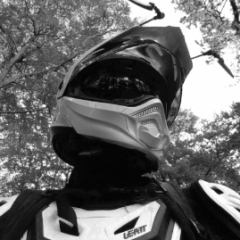-
Posts
17,957 -
Joined
-
Days Won
733
Content Type
Profiles
Blogs
Forums
Gallery
Pipeline Tools
3D Wiki
Plugin List
Store
Downloads
Everything posted by Cerbera
-
Ok, that is some weird shit right there ! The scene has become somehow broken such that no deformers work on anything. Create a new scene and see if it works there like it does for me. And if it does work, pop this one in the bin, and try and recall what you may have done in this scene that could have caused it to break ! CBR
-
Please put the version of Cinema you are using in your profile so that we know what functionality is available to you... Bend deformers are definitely the way to go here ! Nothing else gives you as much control over where bending happens and how much of it there is over time. To try and recreate that using dynamics is probably expecting too much of dynamics ! Mograph can be used, possibly in blend mode between 2 models, each with bend deformers set to +max strength and -max strength amounts, so it can interpolate between them across however many clones you make. Then you should be able to keyframe either of those bend deformers to get the sort of result you want. Adding a delay effector in either blend or (subtly used) spring modes on the cloner will help naturalise that motion. CBR
-
That's OK - I don't have to convince you, and maybe that tool just isn't optimised for the ways you want to work ! Fortunately there are myriad ways to model perfectly adequately without using Poly Pen at all, so just do whatever works for you I guess ! CBR
-
But also the most precise, because you place each point individually for the first poly. And of course if you are in R25+ if you don't like the default just change it using the presets system to whatever you'd prefer instead ! CBR
-
It is default because it the most useful mode for starting retopology, or anything that is best started with a single polygon, which is the primary use for PolyPen. CBR
-
It does work with a symmetry object and it does have projection features ! That's only the default if you go round the whole object click click click, and if you do, an ngon is actually the most helpful result you could want ! Think about it - how could it possibly know what you want the topology to be doing when the only input it has is the perimeter vertices !? The chances of it getting it as you want it are almost zero, so the ngon is there so you can just use the same polypen tool (or any other) to cut it up as you want, or you can do a simple inset and get a perfect perimeter loop ! But if the first 5 clicks you make define just a single polygon, which is the preferred way of using that mode, thereafter you just hold ctrl and drag edges off to create the rest of the shape. Like so many things in life, it's not the size of your weapon that counts, but how you use it in battle ! CBR
-
No, it's quite recent thing (R25 I wanna say ?) in response to a lot of user feedback that it wasn't always clear which tool was selected. Even if it is not particularly intuitive to remove it via the HUD settings, we can't deny that's the most logical place for it ! CBR
-
No ! That is meant to be there and the way we turn it off now IS the HUD settings ! CBR
-
You can have non-planar polys as long as you spell them right 😉 lols... I would say it is almost impossible to make anything interesting from 99 polys without some or even TOTAL non-planarity ! The lower density of polys you work with the more non-planarity is gonna happen, and this is the very lowest of the low ! CBR
-
Since S24 yes we can reproject with it !! CBR
-
Wow - I have the opposite experience; there is a never a single project where I don't use it ! One of the best, most helpful and flexible tools we have in my book ! Yes, that's fine ! Quad strip mode (edges) allows that exactly as specified ! But as @Igor pointed out, even easier to just click and drag out a whole strip of them in Quad Strip / poly mode. Once we factor in that having done this we can instantly pick up and adjust any component; point, edge or polygon without changing either tool or mode, and add the ability to extrude by holding control, and you have a fabulously useful tool before you even get to any of its 'special abilities'... for polygon by polygon work and especially retopo and for the tweaking / adjustment phase of meshes I honestly think there is nothing better... CBR
-
Yep - RS Object tag. CBR
-

Plastic / Clay texture with marks as if made in a mould
Cerbera replied to MickeyMilano's topic in Cinema 4D
Those seams are such a tiny detail that I think you could probably get away with minimal displacement there without much compromise to the loops you need for animation - just make the body and leg loops slightly more even in distribution than they would ordinarily need to be. But I would try with bump or normal map first, to see how believable it looks, because obviously if you can do it without displacement then no compromise to your body loops is necessary at all. CBR -
Do you have Cineversity by any chance ? There's a whole series by EJ on the subject there ! CBR
-
No indeed. Whilst Cinema does have this functionality intended (to work with shift modifier I am told) it's not quite working yet, but should be at some point. CBR
-
The cloner on the right does not have any effectors in its list. Drag the effectors you want in there manually. This happens when you don't have a cloner selected when you add the effector, or add a new cloner after adding effectors to the previous one. CBR
-

Distorted corners issue while using cloth modifier
Cerbera replied to scifidesigner's topic in Cinema 4D
Yes, Disconnect would also do it, but I remain slightly confused about why. If we look at the problem mesh on the right there, there are actually borders along all the edges of the cube, so I am left wondering why Cloth was doing what it did there. Oh well, I'll put it down to quantum weirdness, and let it pass... CBR -

Distorted corners issue while using cloth modifier
Cerbera replied to scifidesigner's topic in Cinema 4D
They are merely disconnected poly islands within the same mesh. And they really have to be disconnected for this sort of panelling to be useful / work. No, it shows the opposite of that, the green lines being being borders ie places where polygons are NOT connected to the adjacent ones. Yes of course; seletcion tools in component modes don't care what is connected to what - you can select it regardless. The answer to getting the result you wanted above, ie preventing those cross-corner parts is to split that mesh into either 3 or 6 separate meshes. So either pairs of cube faces on each axis, or each cube face individually. That way they can all go under a cloth SDS, and it will be impossible for it to add thickness across corners. CBR -
Ah Ok I get ya... that'll be because you seem to have inadvertently set your modelling axis position / orientation to World and World, as opposed to Selected and Axis like they used to be !! Mine'll look a bit different to yours but the main fields should be the same... Once you've done that you should find that coords manager reflects the current selected component using the selection tools as well as the transform ones. CBR
-

Distorted corners issue while using cloth modifier
Cerbera replied to scifidesigner's topic in Cinema 4D
Ok, I found a key difference between your left and right meshes. The one on the left has every panel disconnected, as shown here by mesh checker and the green lines, whereas the one on the right does not have a border round every panel, so some points remain connected when thickness is added, which I think is leading to the problems here. Presumably that is something you can fix in divider ? CBR -
You are using a floor object, a special kind of primitive which stretches off infinitely into the distance in the render, but this is not shown in the viewport, hence your possible confusion. You can fix that by replacing it with a plane of the right scale for your scene, which will be of finite and definable size, and therefore can stop when you want it to, leaving some horizon visible. CBR
-
You are going to have to elaborate on that, because even with the file I have no idea what you mean ! How you can you 'mislay' coordinates - coordinates of what precisely ?!! That mesh does have some problems with duff topology (ngons etc), and its axis is in a weird place, but its coordinate system seems fine ?! You can get your coordinates manager back by just loading the default layout again, or getting it from the Windows menu and re-docking it. Lastly, please update your profile to show which version of Cinema you use. There is a hell of a big difference between R21 and S26 for example... CBR
-

Change primitive height only inside Cloner? (step style)
Cerbera replied to Christoph Voorn's topic in Cinema 4D
Oh so it did ! Very pleasing 🙂 CBR -

Distorted corners issue while using cloth modifier
Cerbera replied to scifidesigner's topic in Cinema 4D
I don't think there is anything you can do about that, other than try another seed or pattern in divider or manually apply extrudes to each side independently. If you turn on mesh checker you will see that what divider has done is essentially split the mesh into hundreds of individual islands with exactly coincident borders to surrounding pieces. Cloth Surface is not expecting that, and struggles to deal with it predictably. CBR

